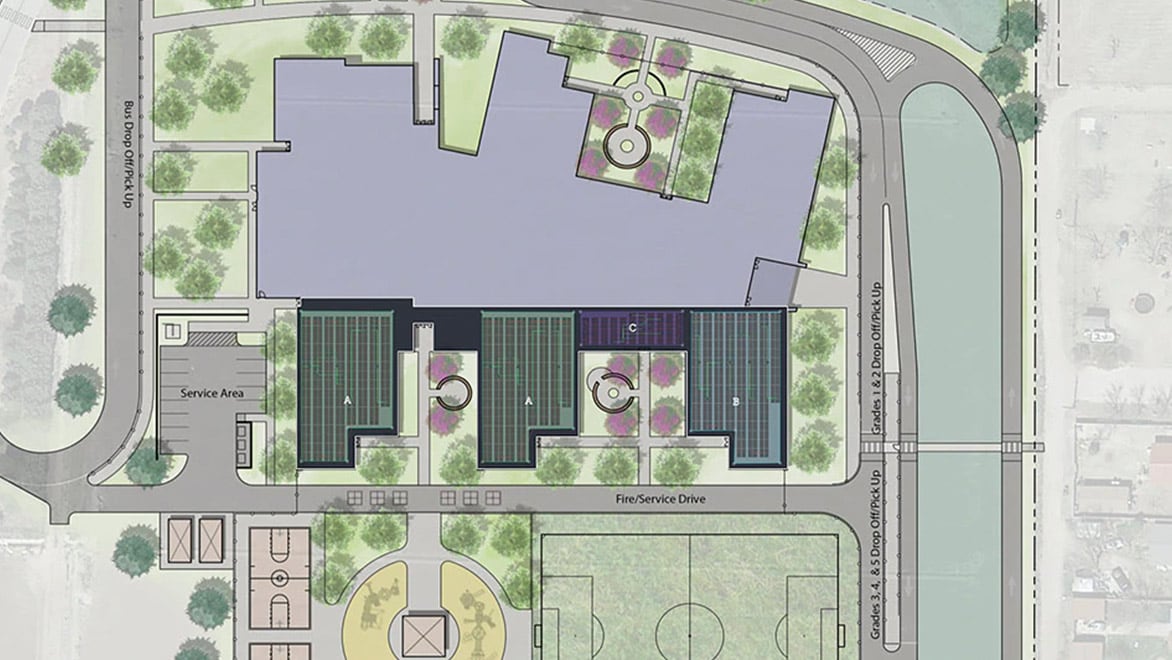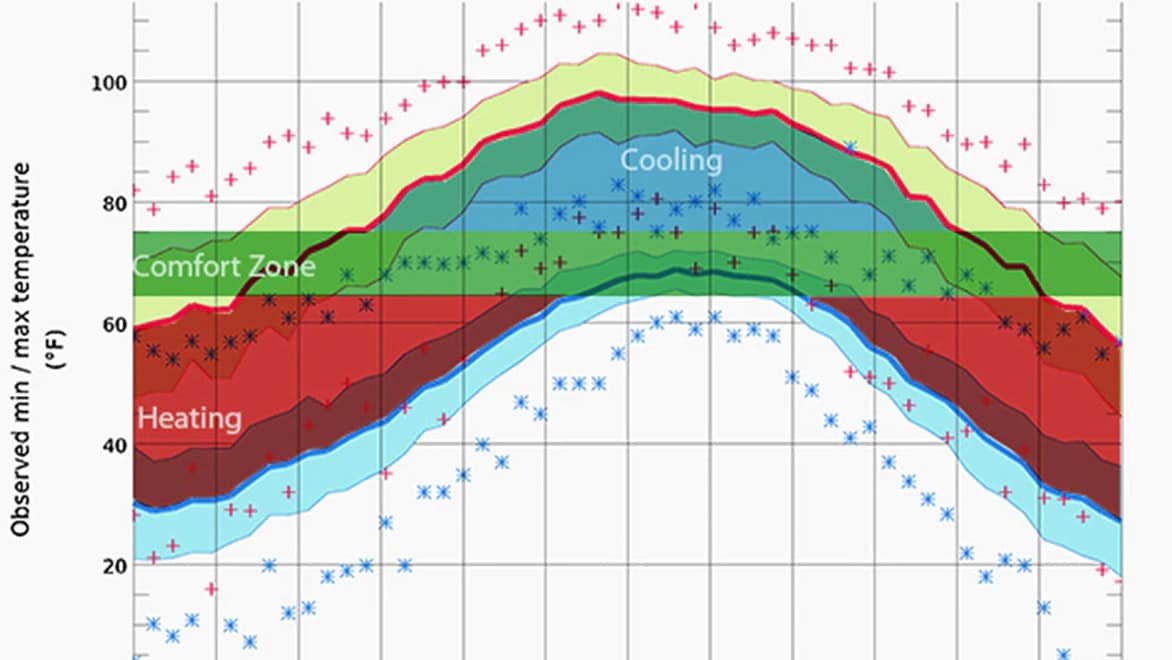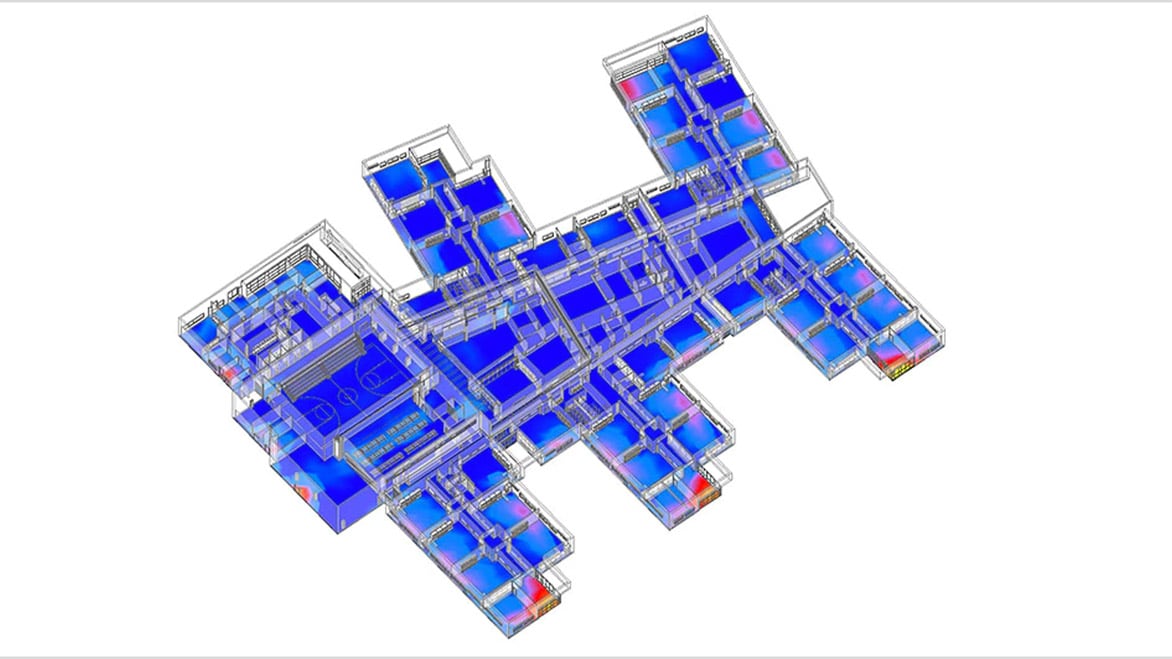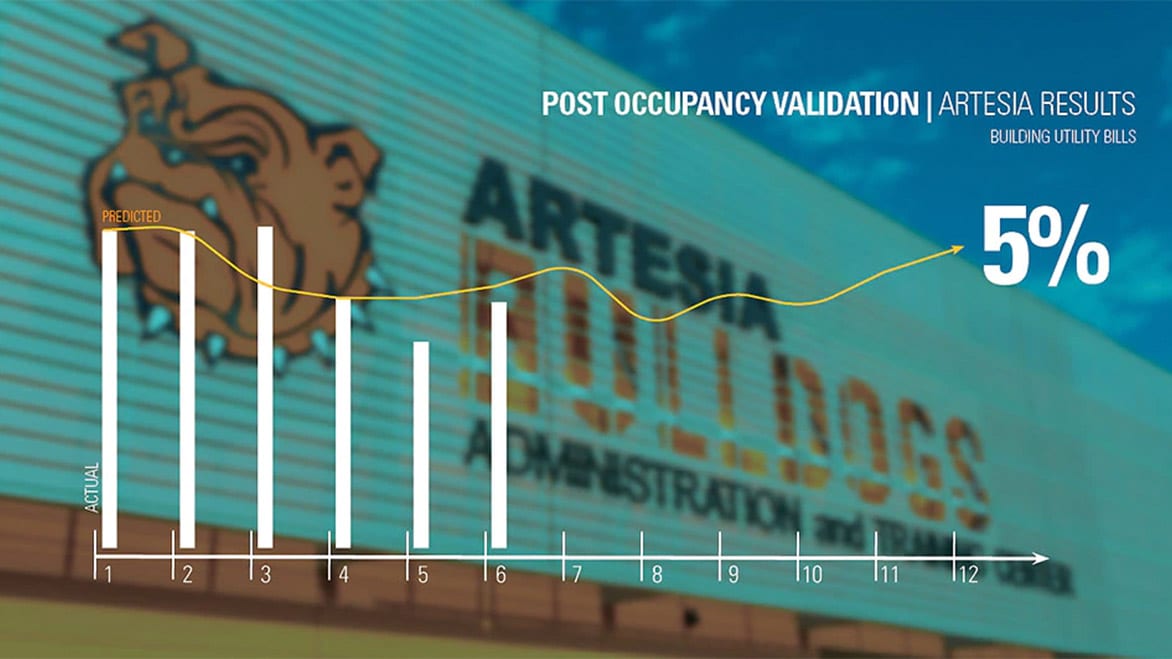DEKKER/PERICH/SABATINI
New Mexico architects design sustainable buildings that deliver high energy performance in sunny, arid climate
CUSTOMER STORY
Share this story
D/P/S achieves sustainabililty goals and improved building performance
The architects at New Mexico–based firm Dekker/Perich/Sabatini (D/P/S) believe in innovation, sustainable design, and functionality. With these principles forming the core of its mission statement, it comes as no surprise that D/P/S has prioritized sustainability and building performance in its projects. Creating a harmonious design with natural design elements can be challenging, and D/P/S uses the Architecture, Engineering & Construction Collection throughout its entire design and construction process, which helps the firm achieve sustainability goals and improve building performance over time.
Connecting BIM workflows to sustainability goals
D/P/S sees sustainability as crucial to the success of a building over its lifespan, and the firm takes a broad view of what that means. While it seeks to design buildings with lower carbon footprints, it also thinks that a sustainable built environment should contribute to a community’s livability and water-use goals. D/P/S architects rely on the BIM (Building Information Modeling) tools in the Architecture, Engineering & Construction to connect design workflows as they make choices to help enhance sustainability and building performance. Recent comparisons of expected performance to real-world energy use on completed projects show that the firm’s approach to sustainability works.
Making the 2030 carbon-neutral building commitment
D/P/S signed onto the goals of the American Institute of Architecture (AIA) 2030 Commitment, which is an initiative that calls for all new buildings, developments, and major renovations to be carbon-neutral by 2030. The firm uses Insight—a building performance analysis tool that works with Revit BIM software—to report on building performance as part of the 2030 Commitment, and to incorporate building-performance data into the earliest stages of the design workflow. In addition, the firm continuously explores new ways to connect sustainability considerations to its design workflow. For example, on a recent elementary school design in New Mexico, D/P/S included everything from renewable energy generation, glazing, and lighting to orientation and playground usability in its performance considerations.

“Performance data in the design process contributes to sustainability, but sustainability success takes place over the life of the building,” says Brandon Garrett, an architect and associate with D/P/S. “Our clients appreciate sustainable design options that reduce costs long term and provide healthier environments for their occupants.”

A holistic view of building performance
New Mexico attracts residents with its generally dry, comfortable climate. While the state enjoys an average of more than 270 sunny days per year, the average yearly rainfall of just 15 inches makes water conservation critical. As D/P/S architects design buildings, they are mindful of how their design choices will interact with the environment and impact sustainability. However, that could potentially lead to roadblocks in the design workflow.
“When building-performance analysis takes place outside of the usual design workflow, it’s inefficient,” says Aaron Ketner, intern architect and energy specialist at D/P/S. “Tools like Insight help by making analysis fast and easy for everyone, but we are exploring ways to connect design and performance considerations even more closely. We want to see how every design tool can contribute to higher building performance.”
“The tight integration between Revit and Insight helps uncover options, like sunshades, that optimize the amount of solar energy entering a building.”
—Brandon Garrett, Architect and Associate, Dekker/Perich/Sabatini (D/P/S)
A toolbox to help with sustainable design
D/P/S regularly relies on several BIM tools in the AEC Collection, including Revit BIM software, Insight for building performance analysis, and Navisworks project-review software for coordination and clash detection. The AEC Collection also included several tools less familiar to the firm—ones that D/P/S decided might be able to contribute to sustainable design in new ways.
A Municipal School District Replacement Elementary School project highlights the firm’s strategy. Beginning in Revit, the team created concept models and brought them into Insight for performance analysis. As the design progressed, the team moved rapidly between Revit and Insight, gaining a quick understanding of the performance implications of design decisions. For instance, the team explored shading and glazing options for a spacious communal gathering area that featured large windows. Later in the design process, InfraWorks civil infrastructure design software and Dynamo Studio played roles in fine-tuning the design.
“With large windows, you want to balance reducing solar heat gain while maintaining good daylighting levels,” Garrett says. “The tight integration between Revit and Insight helps uncover options, like sunshades that optimize the amount of solar energy entering a building. We can also enlighten clients about how much a design choice can lower energy costs over the long term.”

Water and wind take design outside
D/P/S found that InfraWorks could help them consider and visualize the elementary school design in the context of the site. InfraWorks lets D/P/S overlay designs onto site data and imagery. This lets the clients see how designs will look on their sites, and it also helps D/P/S figure out where to place cisterns that collect rainwater and make landscape maintenance more environmentally friendly. With the Carlsbad school, D/P/S used InfraWorks to help the client visualize where to place trees to protect the playground from high winds.
“We used wind data and the flow analysis tool to get a general idea of the best place to position the trees, and then we turned to InfraWorks,” Ketner says. “Using InfraWorks, we were able to create a visualization that showed trees in relation to the new building and site. This helped us fine-tune the design with the client in a way that makes the playground more usable—and in tune with the environment—on windy days.”

aerial view of wind patterns around school
Automated design exploration
The facade of the new elementary school included fiber cement panels. The client wanted to use three different colors for the panels and to randomize the use of color. The design also called for a patterned offsetting of the placement of the panels to give the facade texture. D/P/S decided to use Dynamo Studio, which lets designers use computational design to create visual logic and automate tasks. D/P/S programmed Dynamo Studio to generate a design with the desired pattern offsets and to randomize color distribution.
“We saved many hours on the panel design, thanks to Dynamo,” says Patrick Podeyn, BIM specialist with D/P/S. “Looking ahead, we anticipate using Dynamo to help us optimize building performance. We can use Dynamo to do things like automatically generate sunshade configurations in Revit for performance analysis in Insight. It can generate hundreds of options in the time it might take us to create just a few manually.”
Better building performance shows up in energy bills
Since embracing a connected BIM workflow with Insight for performance analysis, D/P/S has completed numerous projects—and contributed data to the 2030 Commitment representing more than 2.4 million square feet of space. But have design choices delivered real results? D/P/S found out by looking at real power use and billing data from a completed project.
“For the energy-efficient project we studied, the energy use predicted by Insight is within 5% of the actual results,” Ketner says. “While our process is to use analysis for iterative design comparisons, that’s quite accurate, and shows the value of connecting building performance and sustainability tightly to the design process.”

“For the energy-efficient project we studied, the energy use predicted by Insight is within 5% of the results.”
—Brandon Garrett, Architect and Associate, Dekker/Perich/Sabatini (D/P/S)
Make sustainable design part of your BIM workflow
Are you ready to include performance predictions in your BIM workflow? As part of the AEC Collection, Insight helps you conduct energy analysis in the earliest stages of the design process.